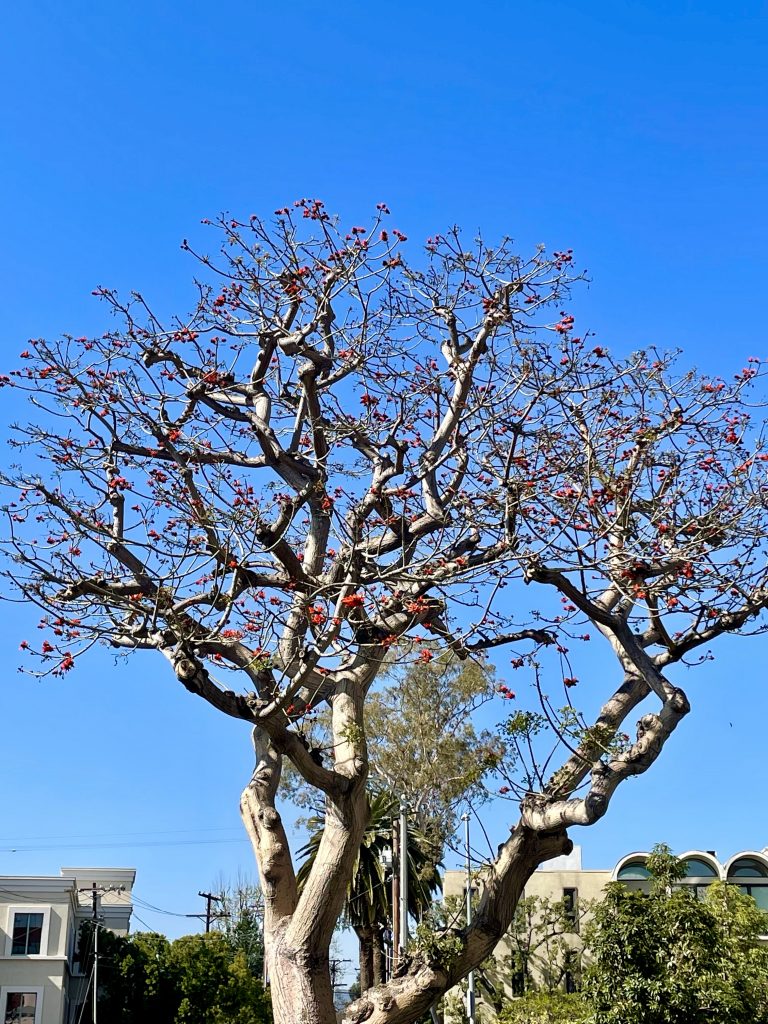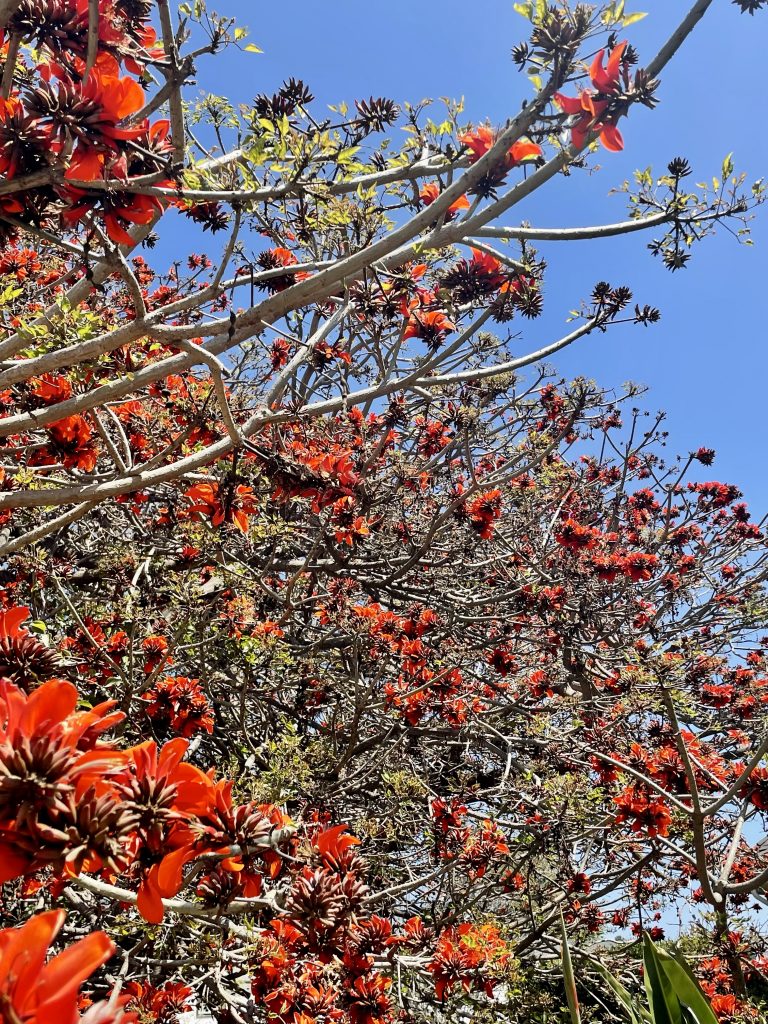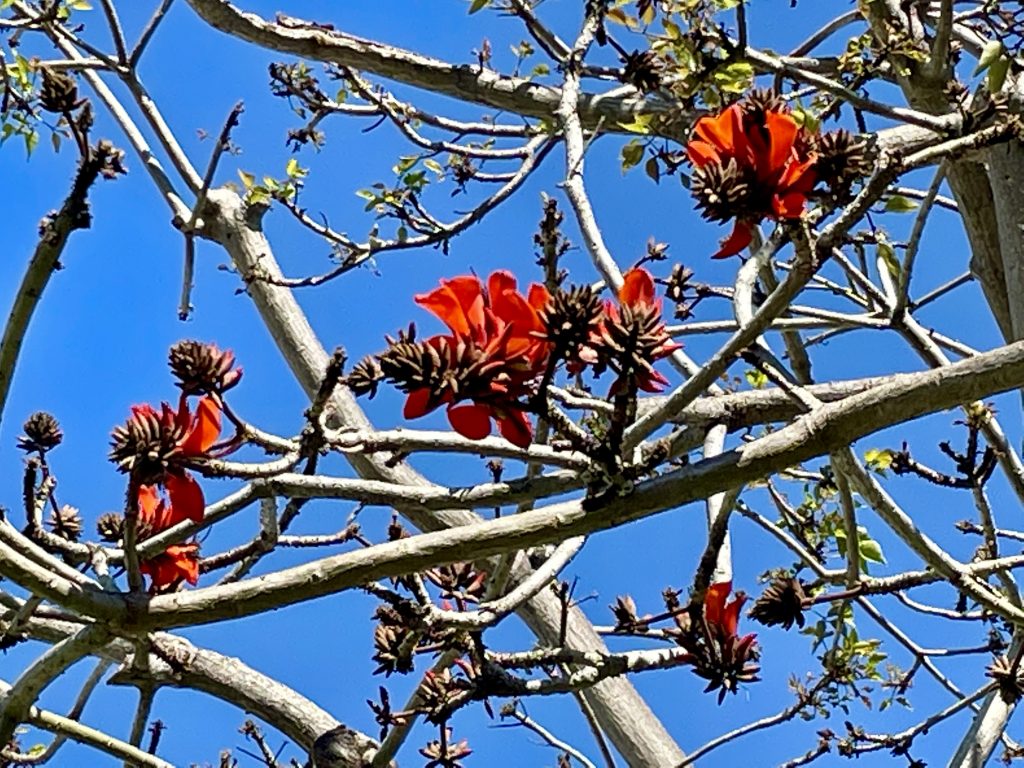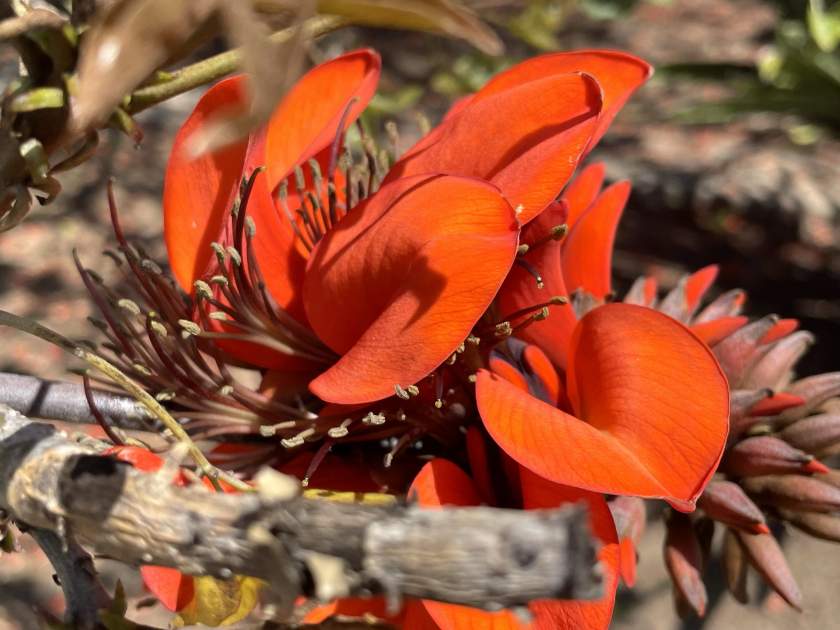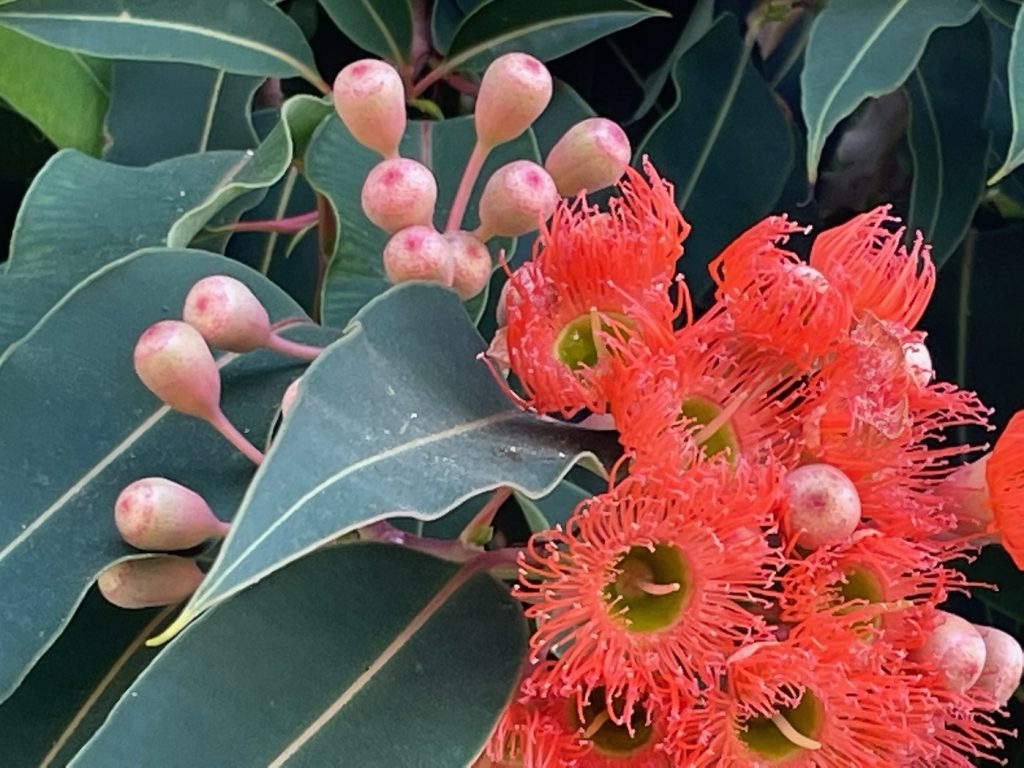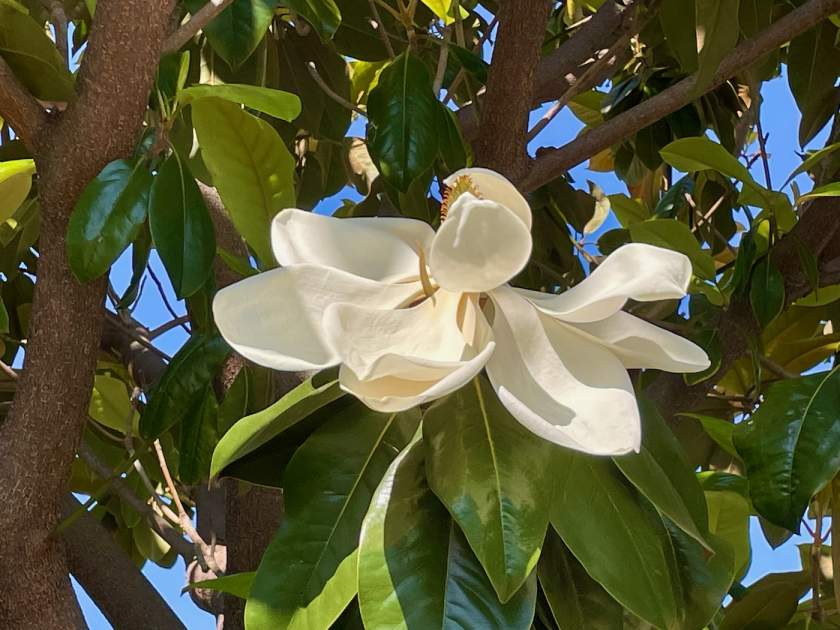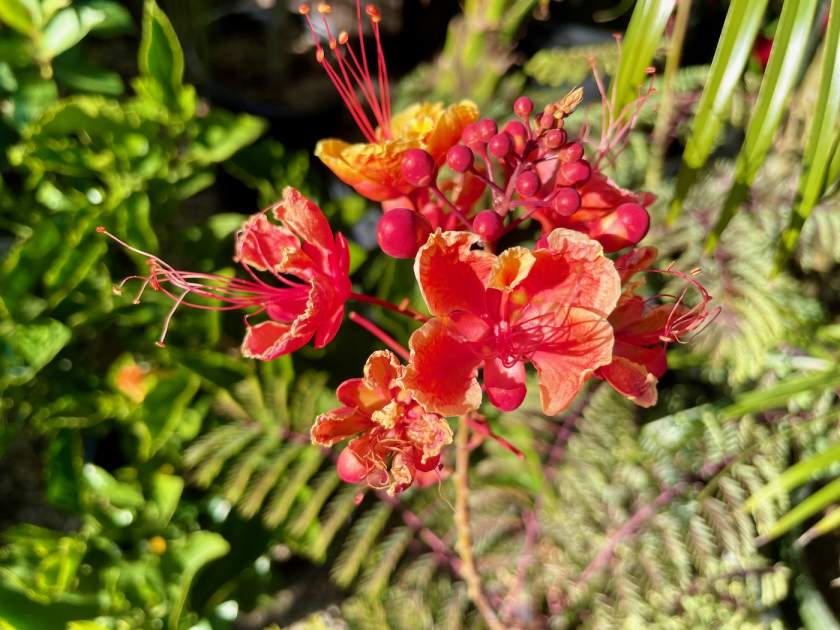Erythrina caffra: The Majestic Coral Tree Bridging Cultures
Erythrina caffra, commonly known as the Coast Coral Tree, is a magnificent deciduous tree native to Southeastern Africa. However, its beauty has captivated the attention of enthusiasts and horticulturists in distant lands, including California and India. In an intriguing twist, all 17 species of Erythrina are now recognized as the official tree of Los Angeles, despite their non-native origins.
This honorary distinction came about in 1949 when Mrs. Valley Knudsen established a group called Los Angeles Beautiful as part of the city’s beautification efforts. The organization’s vision led to the planting of 126 coral trees in the empty median on San Vicente Blvd. following the shutdown of Pacific Electric. Today, these trees are cherished as Los Angeles Historic-Cultural Monuments, symbolizing the enduring bond between nature and human endeavors.
A Stately Deciduous Beauty
Erythrina caffra commands attention with its imposing stature, reaching a height of approximately 30 feet or 10 meters. This plant is part of the Fabaceae family of plants. The tree boasts a compound foliage arrangement composed of three leaflets. Each leaflet exhibits a broad ovate or elliptical shape, devoid of hair. However, it is the resplendent clusters of coral-red flowers that truly steal the spotlight. These vibrant blossoms, characterized by a single large petal flanked by four smaller ones, adorn the tips of the branches before the leaves emerge.
The curvature of the flowers gracefully reveals the prominent stamens within. Erythrina caffra blooms in the late winter and early spring months, offering a striking burst of color to the landscape. The tree is also referred to as the Erythrina caffra, paying homage to its captivating floral display. Following the flowering stage, the tree produces red capsules that mature within dark cylindrical pods.
Historical Significance and Cultural Reverence
The significance of Erythrina caffra extends beyond its visual appeal. Carl Thunberg, a prominent botanist, bestowed the species name upon it. “Erythrina” is derived from the Greek word “erythos,” meaning red, which aptly represents the vibrant hue of its flowers. Meanwhile, “caffra” originates from the Arabic language, signifying non-believer.
In South Africa, Erythrina caffra holds great cultural and historical importance, particularly in Zulu traditions. Traditionally, these magnificent trees were planted on the graves of tribal chiefs, symbolizing their esteemed status and acting as a link between the earthly realm and the spiritual realm. The Zulu people also utilized the soft and spongy wood of Erythrina caffra for crafting canoes, while tarred sections were repurposed as roofing shingles. Furthermore, the tree’s bark was valued in traditional medicine for its purported healing properties, particularly in treating wounds and arthritis.
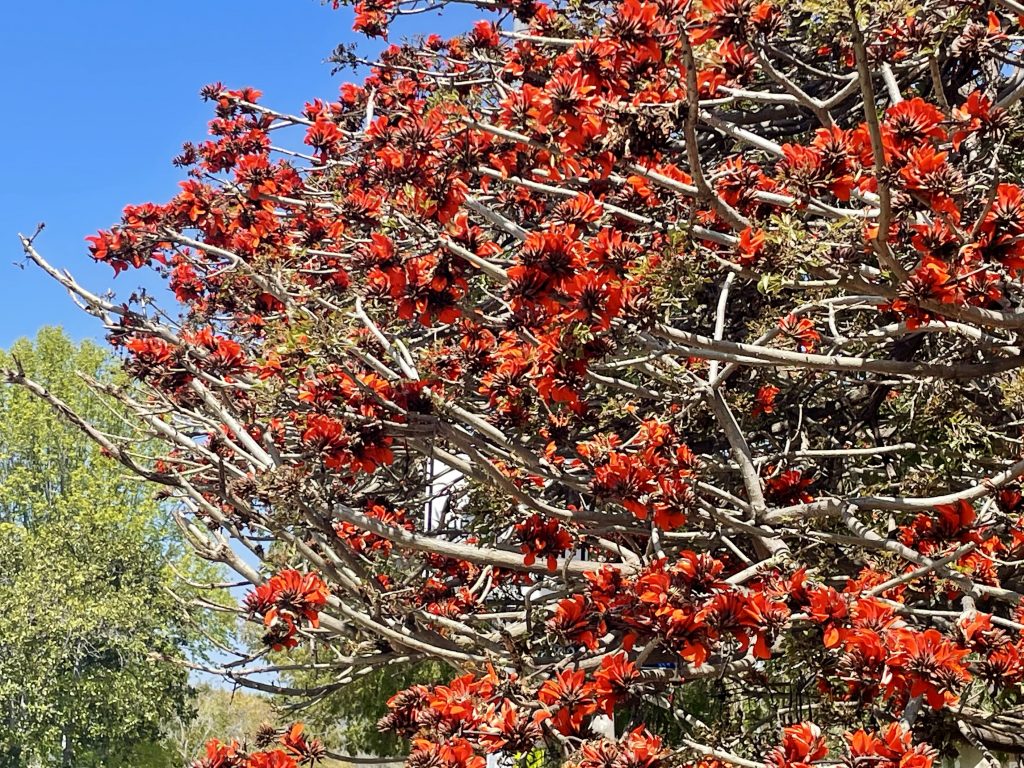
Cultivating Erythrina caffra with Care
To cultivate Erythrina caffra successfully, adhere to the following guidelines:
Sun and Soil Requirements: Erythrina caffra thrives in full sun, basking in the warmth and light that it provides. When selecting a planting site, ensure it is well-drained and situated in a dry location. Although the tree exhibits excellent drought tolerance, it is not frost tolerant and requires temperatures above 28°F (-2°C) for optimal growth.
Watering: During the initial stages of growth, regular watering is essential, especially in hot and dry weather. Avoid overwatering, as excessive moisture can lead to root rot. Once the tree is well-established, it exhibits drought tolerance and can withstand longer periods without water. The bark is smooth and sometimes thorny. This tree grows a heavy grey trunk of softwood and long curved branches, they are prone to breakage if overwatered. Keep them on the dryer side.
Fertilization: Erythrina caffra benefits from an annual application of a balanced fertilizer in the spring. This will provide the necessary nutrients for healthy growth and abundant flowering. Consider using a slow-release fertilizer or follow the instructions on a liquid fertilizer to ensure proper dosage and timing.
Pests and Diseases: Erythrina caffra is generally resistant to pests and diseases. However, it may occasionally attract aphids or scale insects. Regular monitoring of the tree’s foliage and prompt treatment with appropriate organic or chemical solutions, if necessary, can help prevent infestations from spreading.
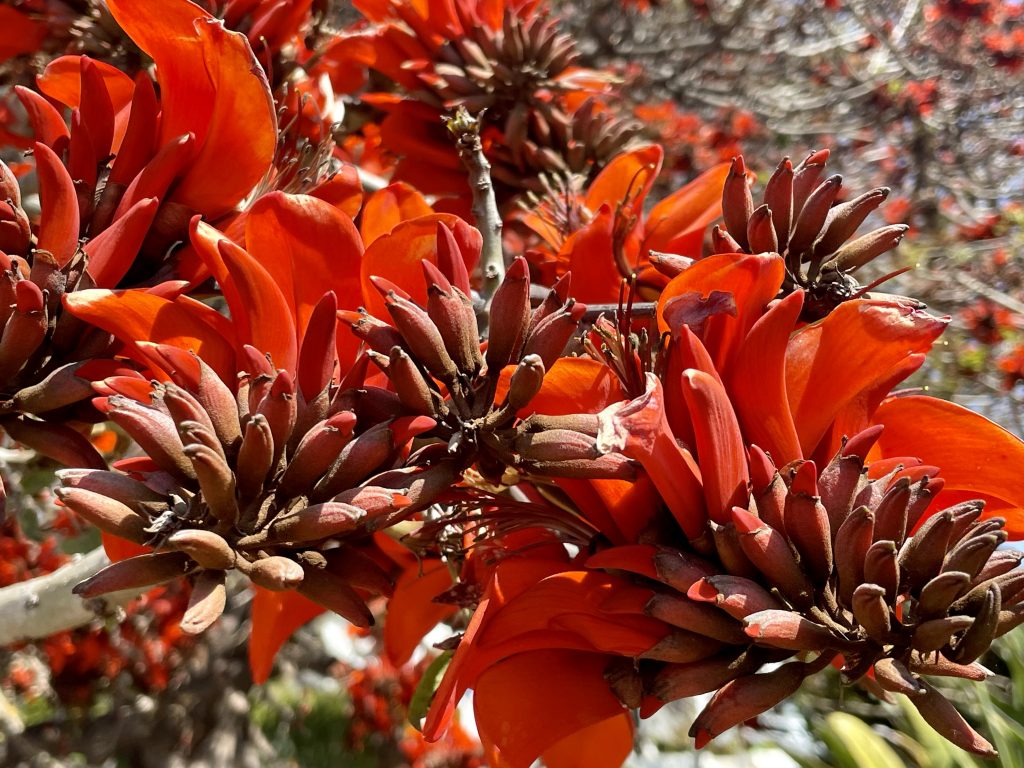
Propagation and Care:
Propagation of Erythrina caffra can be accomplished through various methods. One approach involves germinating seeds, which may benefit from soaking or scarification techniques such as sandpaper abrasion or partial seed removal to enhance germination rates. The seeds of Erythrina caffra should be handled with caution, as they are known to be poisonous.
Another propagation method involves using hardwood cuttings, which should be taken when the plant is emerging from dormancy. Ensure that the cuttings are placed in a suitable rooting medium and provided with proper moisture and warmth to encourage root development.
Once established, Erythrina caffra requires minimal maintenance. However, it is crucial to protect young plants from fungal diseases by providing adequate air circulation and avoiding excessive moisture around the base of the tree.
Pruning: While Erythrina caffra does not require frequent pruning, it is advisable to remove any dead, damaged, or diseased branches and leaves to maintain its overall health and appearance. Deadheading spent flowers can also promote additional blooms. If shaping is desired, pruning can be carried out in the spring or fall, ensuring not to remove more than one-third of the tree’s growth at a time.
In conclusion, Erythrina caffra, with its grandeur and historical significance, is a remarkable tree to cultivate. By providing optimal growing conditions, propagating through various methods, and practicing proper care and maintenance, you can enjoy the beauty and cultural significance of this tree in your own garden or landscape.
